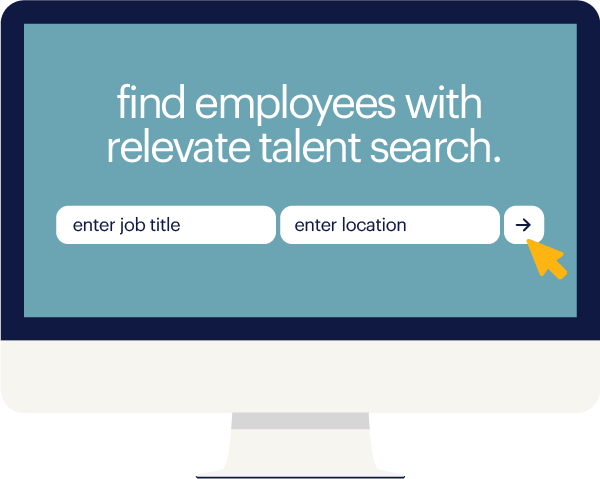The U.S. is the largest tech market in the world — representing 31 percent of the global market in 2018 — and it's growing every day. As technology continues to drive everything in today's world, and with new breakthroughs and product offerings coming in fast and furiously, businesses and information technology (IT) professionals alike are experiencing a boom like none other.
But with that boom comes a significant strain on the talent market. In today's ultra-competitive hiring landscape, there simply aren't enough job seekers to fill all of the openings out there — especially as emerging tech continues to widen a perilous skills gap. In fact, 45 percent of HR managers state that they can't fill their open positions due to a lack of qualified talent.
So what can your company do to attract — and retain — top tech talent, especially for the industry's most in-demand roles? Read on for three steps you can take today to address some of the biggest recruitment pain points in this space, which will put you on the fast track to strengthening your hiring practices and getting those critical roles filled.
prioritize sourcing passive candidates
The U.S. Bureau of Labor Statistics is projecting a 13 percent growth across all computer-related and IT occupations by 2026 — that's about 557,100 new jobs — so relying on traditional recruitment channels isn't going to keep you apace in the hiring department. Instead of relying on applications coming through your careers portal, you're going to need to focus on finding passive candidates — those skilled workers who are already providing great value in their current roles and aren't crawling job boards every day. Here are some steps you can do to source passive candidates:
1. build internal recruiting and apprenticeship programs
Instead of looking out, look in. Your tech teams are made up of motivated employees hungry for new challenges, so when it comes to closing that skills gap, prioritize upskilling those superstars, either through educational initiatives or apprenticeships. These candidates are already familiar with your company's operations and vision, and with the right mentorship and skill development, they could be providing additional value very soon.
2. ditch the job fairs
Job fairs may get you in front of a lot of potential candidates, but the best talent out there likely won't be attending these events. Instead, identify local tech meetups, hackathons and other group events you can attend in order to network potential candidates. Not only will you get to see their dedication to tech firsthand, but you'll also be able to get an idea of what they're like in person — a key consideration when assessing how they'll fit with your culture.
3. partner with a staffing firm
One of the surefire ways to find passive candidates is to work with a staffing firm, since their mission is to match their pool of top talent with new opportunities. High-quality candidates know that working with a staffing expert gets their foot in the door at desirable companies, and now you can get your foot in the door as their next great employer.
streamline your recruitment process
With nearly half (43%) of recent hires stating they received a job offer less than two weeks after beginning the application process and 91 percent saying the interview process influenced their opinion of a company, you can't afford to lose talent because of a slow hiring process. But what can you do to make your processes more efficient and ensure you land a candidate before they receive an offer from a competitor? Here are some steps you can do to streamline your recruitment process:
1. adopt state-of-the-art recruitment tech
Candidates shouldn't suffer through a buggy application portal, and your HR team shouldn't have to suffer through lengthy email chains trying to nail down interview times. Solve for both issues — and more — by upgrading your recruitment tech. Not only will you make a better first impression with candidates as they submit their application, virtual assistants and chatbots can automate cumbersome tasks like scheduling interviews and sending confirmation emails — meaning candidates get in the door faster.
2. use video platforms to expedite early interviews
Job seeking can often seem like a second full-time job, so expedite your early interview rounds by using on-demand video platforms, which allow a candidate to record responses to your questions on their own time. Not only will this make the first round quicker, it alleviates stress for the candidate and gives your recruiters the ability to compare candidate responses back to back.
3. let candidates see collaboration up close
How do you get a team of people to meet with your candidates without requiring multiple rounds of (exhausting) interviews? Invite candidates in for a panel interview followed by an opportunity to see your tech teams at work. Collaboration in this arena is key, so letting candidates peek behind the curtain and interact with your team not only cuts down on the volume of interviews, but ensures your great hire is also a great fit for your culture.
strengthen your employer brand
Job seekers today don't want to just clock in and out of a job — they want a career that's meaningful and an employer that values them. And with a staggering 91 percent of job seekers researching companies online before applying to any of their openings, you're going to need to make sure your employer brand speaks to those points — and more — in order to position your company as an employer of choice.
1. make your job descriptions an extension of your brand
Long gone are the days where you could pen a long list of qualifications and call it a day. To attract the best candidates now, you'll need a job description that provides an engaging narrative for the reader and gets them excited to be a part of your business's vision. Focus on the human aspects of the job — not the rote duties — and be sure to showcase your company's points of pride, like work/life balance, culture and continuous learning. Here are some steps you can do to build your employer brand:
2. tell your success stories
Storytelling is a powerful marketing tool, so take your employer brand to the next level with content that speaks to your company's vision, goals and workplace culture — especially if you're a startup or smaller company without a huge digital footprint. From blog articles to video interviews to social media posts, call out your success stories and show how much meaning your employees find in their work.
3. respond to feedback on employer review sites
Before prospective candidates check out your social channels and careers page, they're going to see what your current and former employees are saying on employer review sites. But don't let your employees do all the talking: Make sure you're in on the conversation by leaving thoughtful, positive responses to any feedback — regardless of whether it's good or bad. This will show how invested you are in the employee experience, and that you're working hard to mitigate any issues employees are raising.
the top 5 roles in the technologies industry
Now that we've stepped you through how to combat some of the biggest hiring pain points in today's technologies landscape, it's time to head on over to these articles to gauge what you need to keep top of mind when recruiting for the industry's most in-demand positions:
-
devops developer
-
security analyst
-
javascript/.net developer
-
cloud engineer
-
machine learning engineer
And remember — a staffing partner can be a valuable resource in today's job market, especially if you know you're going to need to staff up to keep apace with the increasing change in the tech industry.
Reach out to one of the staffing experts at Randstad Technologies today to learn more about our talent solutions and see what we can do to help you find your next great hire. But if you'd rather get to know our talent pool before starting a conversation, head over to our Find Employees portal to browse our nationwide network of quality, vetted candidates right now.








